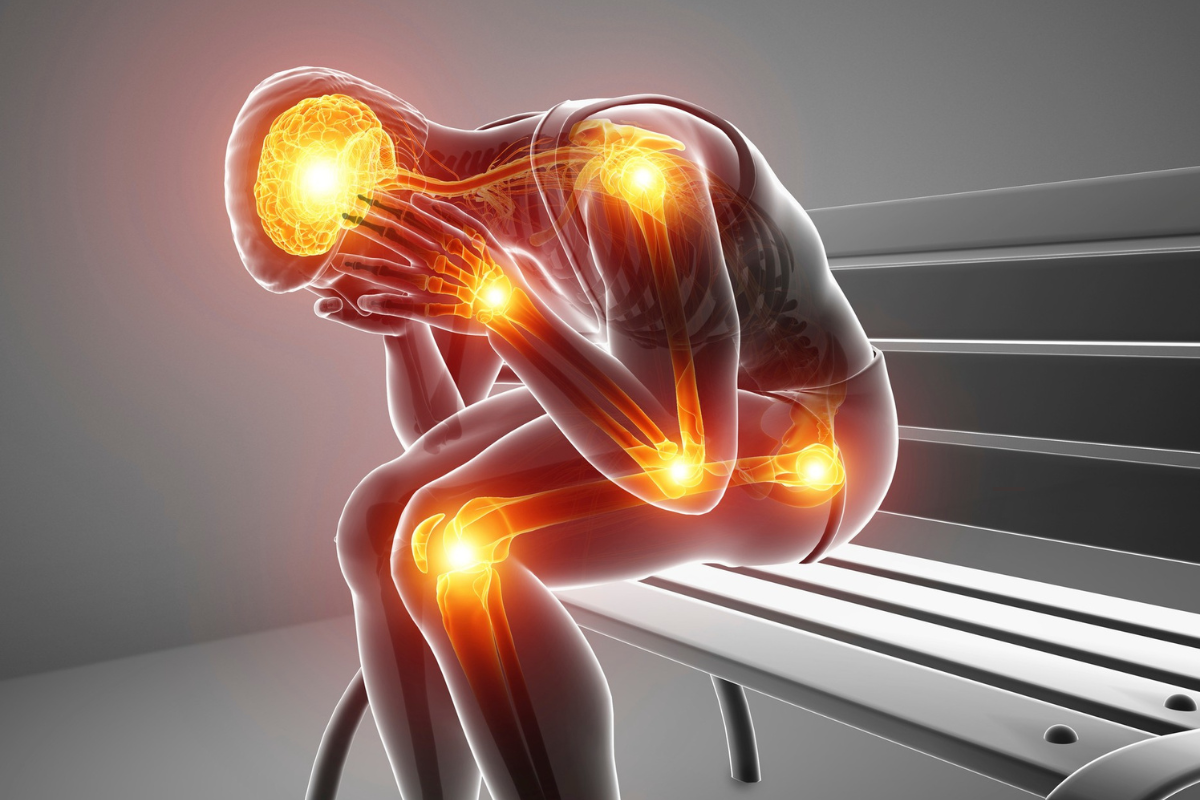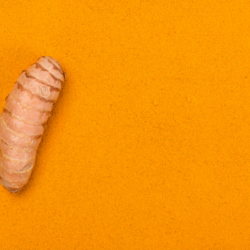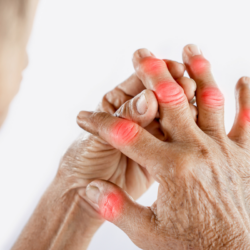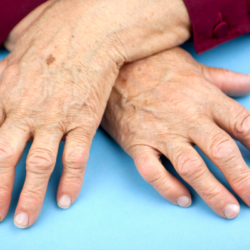Osteoarthritis is the main joint pathology, but it is complex because it is influenced by a variety of factors. Age, excess weight, the menopause and other rheumatic conditions such as chondrocalcinosis play a key role in its onset. Genetically, there is a well-established family predisposition. Local factors also contribute to its development. Although the genetic aspect is predominant, the onset of osteoarthritis varies according to the unique combination of risk factors in each individual. Let’s look at each of them in detail.
Age and osteoarthritis
With advancing age, the frequency of osteoarthritis increases, age being a determining factor in its onset. This increase is due to several changes in the cartilage matrix. Firstly, natural wear and tear of the cartilage occurs over time, accompanied by an altered response to growth factors. At the same time, the hydration capacity of cartilage decreases, adversely affecting its lubrication function and the maintenance of its structural rigidity.
In addition, synovial fluid, which is essential for proper joint function, becomes progressively more viscous. At the same time, mineralisation of the subchondral bone is reduced. This process, combined with remodelling, leads to the formation of osteophytes (bone outgrowths) and geodes (cavities filled with fluid or crystals).
These changes are exacerbated by the depletion of certain key components of cartilage, such as hyaluronic acid, chondroitin and glucosamine. The depletion of these essential elements leads to progressive dehydration of the cartilage. This dehydration leads to inflammatory processes that cause the pain characteristic of osteoarthritis.
Impact of weight on overall osteoarthritis
The heavier you are, the greater the strain on your joints… For a man weighing 80 kg, the pressure exerted on his knees when he walks ranges from 240 to 320 kg, i.e. 3 to 4 times his body weight. Losing weight will help reduce joint pain.
Being overweight places additional physical and mechanical stress on the skeleton. These stresses encourage the development of osteoarthritis, particularly in weight-bearing joints such as the knees. This excess pressure can disrupt the cartilage matrix or aggravate pre-existing lesions. Without appropriate weight reduction, the progression of osteoarthritis accelerates, potentially leading to a disability that limits the patient’s mobility.
Hygiene and lifestyle to combat arthralgia
Occupations that place frequent stress on the joints increase the risk of osteoarthritis because of the repetitive strain on the skeleton. For example, jobs that require manual handling make the joints more fragile. So repetitive trauma or abnormal joint positions have a silent impact on our skeleton.
Repetition of the same movements often affects farmers and manual workers. It can cause osteoarthritis in the joints involved. A sedentary lifestyle also encourages joint problems. Regular activity, such as daily walking, is essential for joint mobility. However, avoid overly intense physical exertion to avoid wearing down the cartilage.
In terms of diet, an acidifying, pro-inflammatory diet encourages joint inflammation. It is advisable to avoid certain foods in the event of joint problems. These include milk, yoghurt, cheese, red meat, pastries, biscuits and processed foods.
Sport is good for the body. However, some sports increase the risk to joints. Football and rugby increase the risk of gonarthrosis. Tennis puts stress on the hips, knees, wrists and hands. Combat sports increase the risk of joint trauma. On the other hand, cycling, swimming and walking are recommended for people suffering from osteoarthritis, except during inflammatory flare-ups. It’s all a question of dose, intensity and frequency.
Genetic and metabolic characteristics
With regard to gender, men are generally more likely to develop osteoarthritis before the age of 55. After this age, the trend reverses due to physiological changes (menopause) in women, with a higher prevalence of osteoarthritis, particularly in the knees and hands.
In some cases, osteoarthritis is manifested by congenital anomalies such as genu varum or genu valgum. In addition, certain genetic mutations increase the risk of developing this condition.
On the genetic side,heredity plays a role in certain areas of osteoarthritis. For example, in the case of osteoarthritis of the fingers, the location of the genetic anomaly on the chromosome concerned has been identified, as has the case for certain forms of familial coxarthrosis and osteoarthritis of the knee, hip and hand.
Hormonal changes in menopausal women also influence the risk of developing osteoarthritis. The reduction in plasma oestrogen levels leads to a reduction in the synthesis of growth factors by chondrocytes. Similarly, testosterone and thyroid hormones can affect the activity of these cells. Stimulation of their receptors increases the synthesis of chondrocyte growth factors. Together, these factors have an impact on the development and progression of osteoarthritis.
Source:
- https://www.msdmanuals.com/fr/accueil/troubles-osseux,-articulaires-et-musculaires/symptômes-des-troubles-musculosquelettiques/douleurs-articulaires-articulation-unique
- https://www.vidal.fr/maladies/appareil-locomoteur/douleurs-articulaires.html





